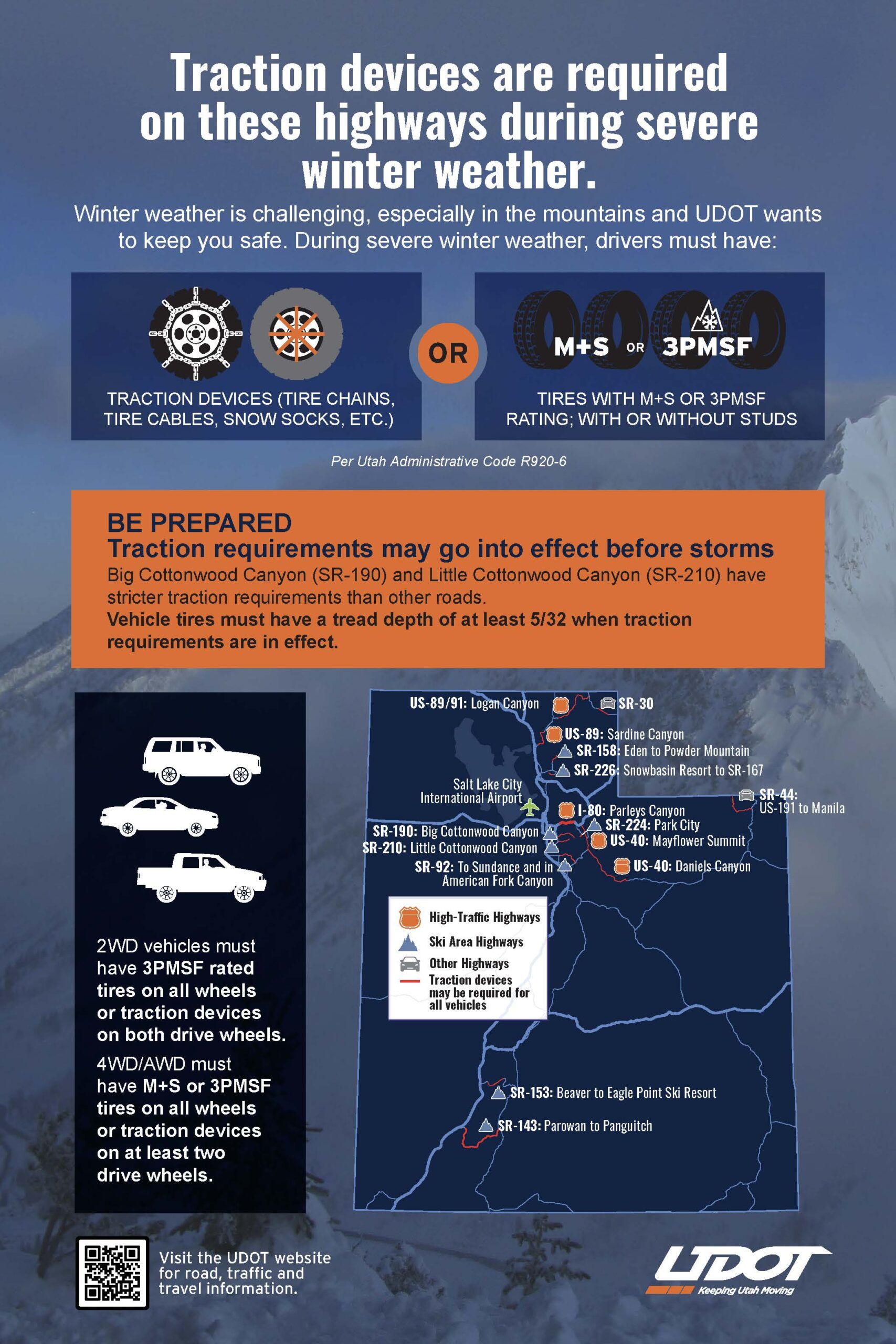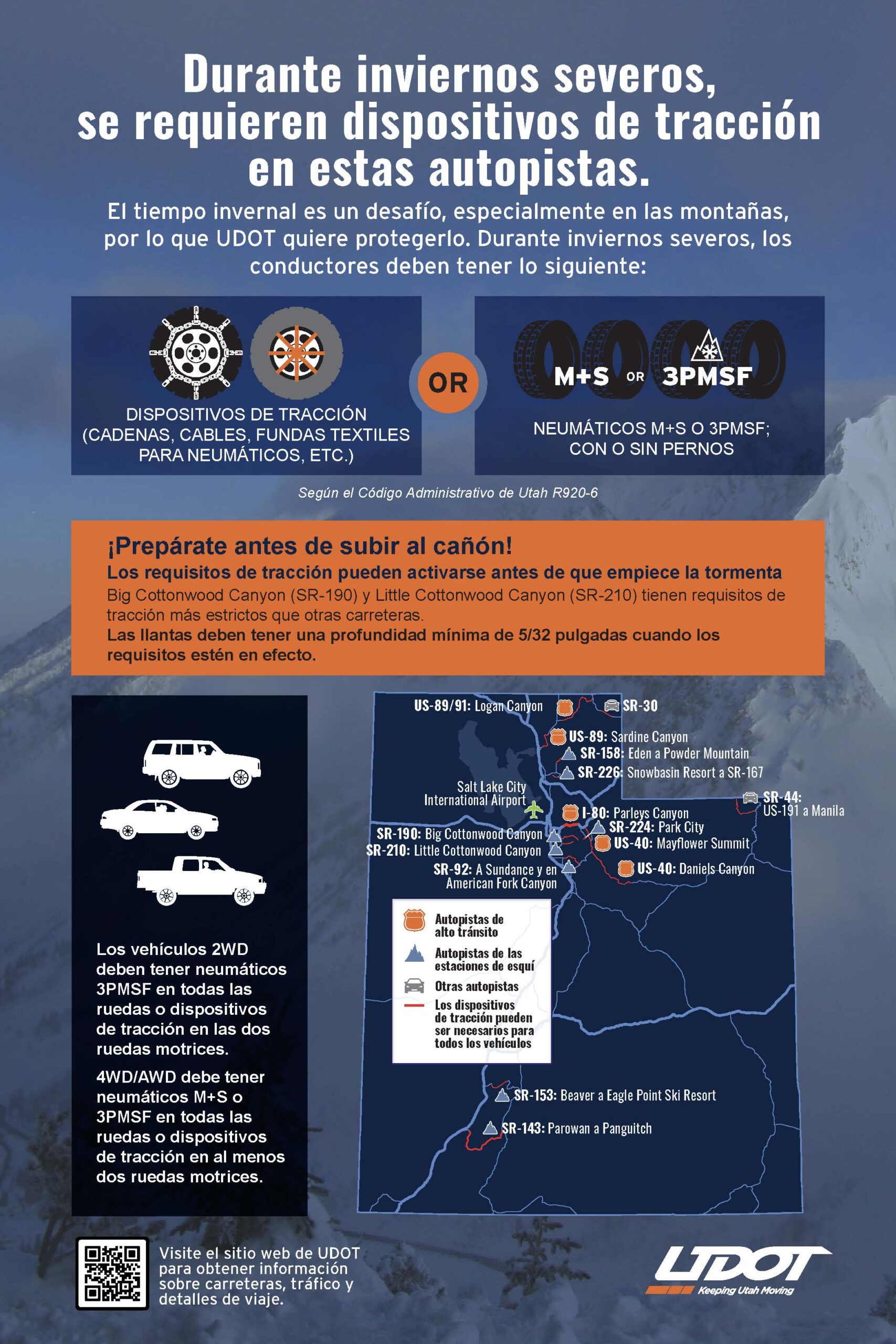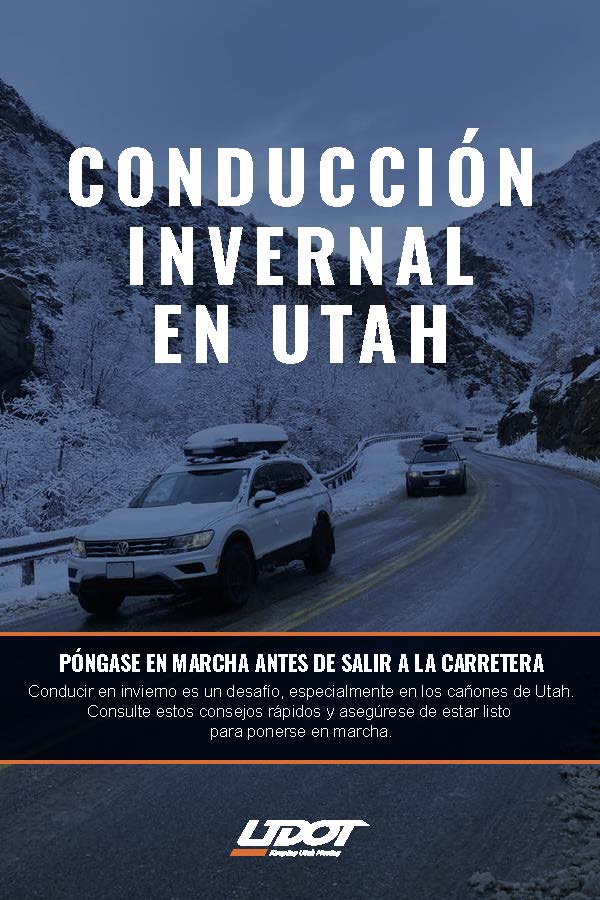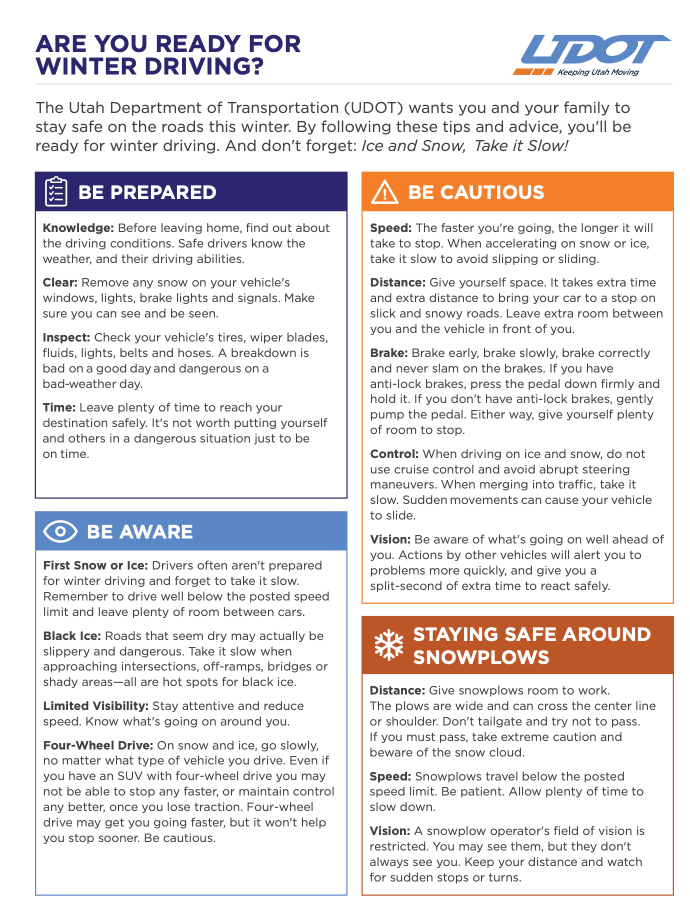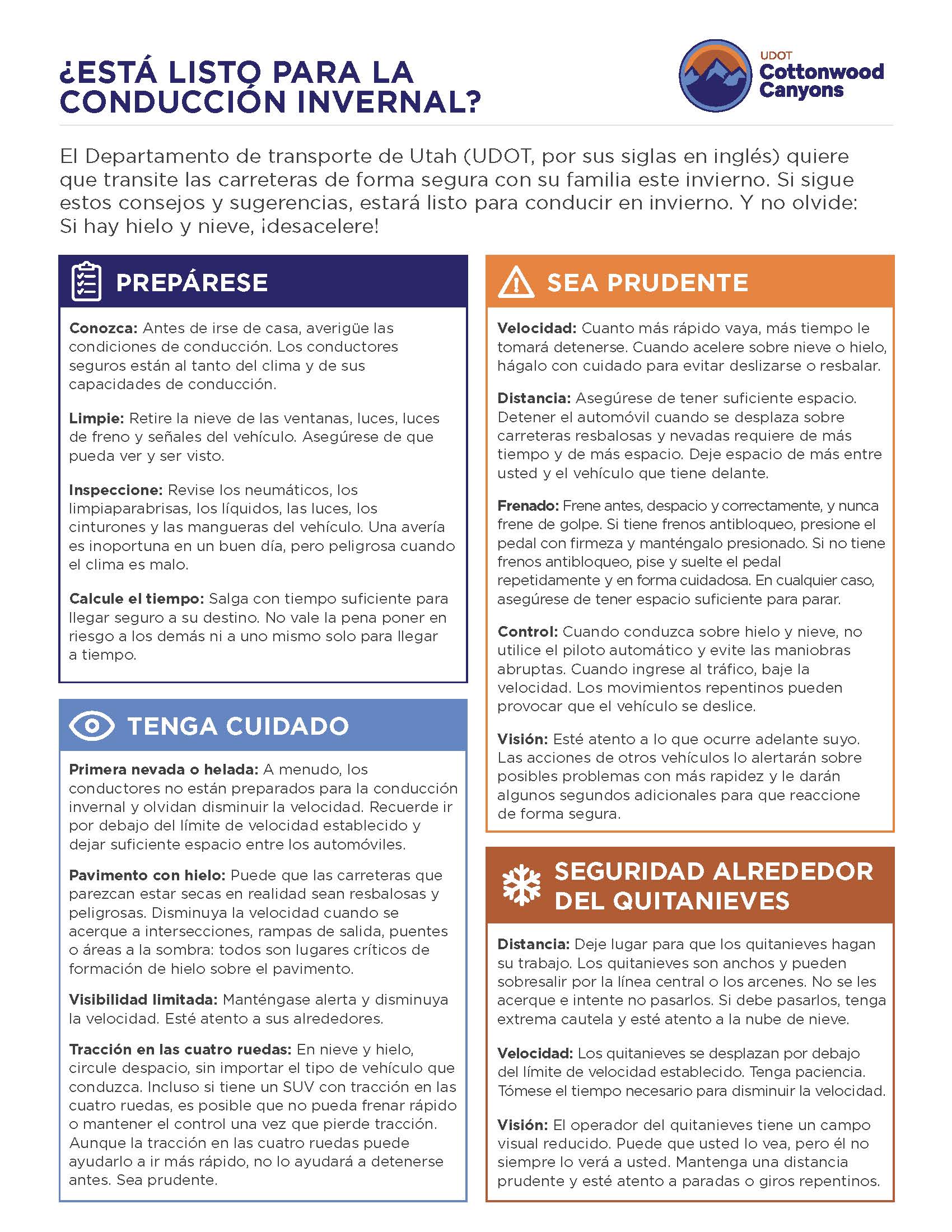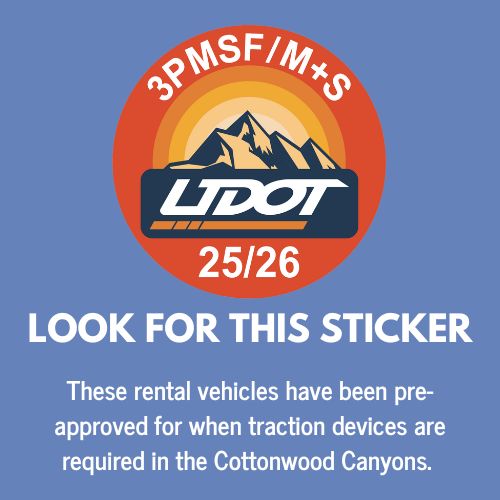UDOT Traction Law
BE READY FOR WINTER DRIVING
What is the “Traction Law” and what are “Traction Devices”?
The Traction Law is Utah’s administrative rule (R920-6) that the Utah Department of Transportation (UDOT) and law enforcement implements during severe winter driving conditions. It is important to ensure that you have appropriate traction devices (snow tires, chains, snow socks, etc.) for winter driving conditions. Traction devices are required during severe winter weather conditions on roads throughout Utah, including Big and Little Cottonwood Canyons.
Utah’s new, enhanced traction requirements ensure people have the right equipment on our roads — which will ultimately keep us safe. The new restrictions allow UDOT to put requirements in place 24 hours before a storm begins, and the updated rule creates a new “Class 3” designation with stricter requirements for the Cottonwood Canyons.
When the lights outside the canyons are flashing, vehicles visiting Big or Little Cottonwood Canyon must have at least 5/32 inch tread depth on their tires. Tires must be M+S or snow tires, depending on the type of vehicle.
AWD/4WD: M + S or M/S tires on all wheels is the minimum requirement. Traction devices such as chains, snow socks, etc. or 3 peak mountain snowflake (3PMSF) tires on all wheels are also acceptable and provide the most reliable traction in severe winter conditions.
2WD: 3 peak mountain snowflake (3PMSF) tires on all wheels is the minimum requirement. Traction devices such as chains, snow socks, etc. on at least two drive wheels are also acceptable.
RENTING A VEHICLE FOR WINTER WEATHER DRIVING
Winter weather driving is challenging, especially in the Cottonwood Canyons (SR-190, SR-210). If you are visiting from out-of-town and renting a vehicle, check with the rental company to verify that your vehicle is equipped with four-wheel drive (4WD) or all-wheel drive (AWD) and the correct tires.
UDOT has partnered with Enterprise Rent-A-Car, Alamo, National and Budget out of the Salt Lake City Airport as well as Rugged Rental and Go Rentals for the UDOT Cottonwood Canyons Sticker Program to pre-inspect rental vehicle tires for the 2025/26 season.
If you choose one of these companies to rent a vehicle during your visit to Utah, look for a vehicle with a sticker on the inside of the front windshield – this is a vehicle that has been pre-inspected and meets Utah’s traction law requirements.
Go-Rentals:
For reserving vehicles at the airport, contact Go-Rentals At Your Service at 1-800-464-8267 to get prequalified and you will be given steps on how and where to retrieve your rental vehicle at the SLC International Airport.
If you are arriving via private aircraft at any of the surrounding FBO’s, you can contact the Go-Rentals direct line at 801-893-9263, where they will enter the reservation in-house and meet your planeside upon arrival with your rental vehicle.
Budget:
If you reserve any class of SUV or pickup truck at a Budget of Utah location, customer service will help you identify a vehicle with the sticker at the time of rental.
Enterprise, Alamo, National:
Enterprise, Alamo and National provide the ability to reserve “Guaranteed AWD” car classes on their websites. If “Guaranteed AWD” vehicles are all reserved, this option will disappear from the available vehicle list. If it is not showing as available, then all cars with stickers are already reserved.
Rugged Rental:
All Rugged Rental SUV and truck-type vehicles are within the Utah winter regulations. In addition, anything that has *4WD* or *AWD* on the Rugged Rental website also meets the requirements of the sticker program and Utah’s traction law.

